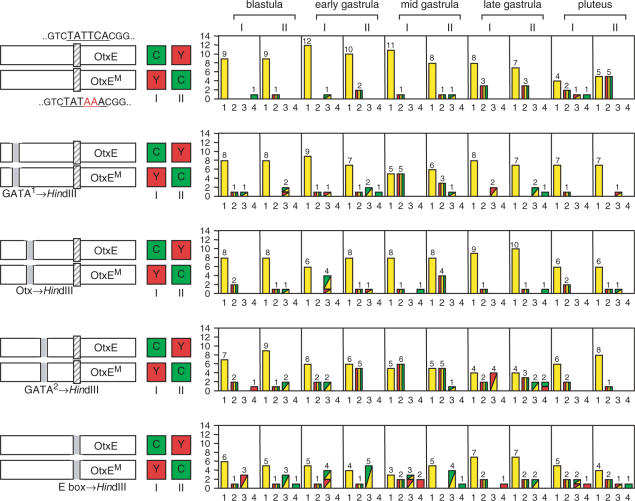Figure 6.
Comparison of the functional interactions between the different upstream sequences and the TATA element within the HpOtxE core promoter. In each panel, the schematic on the left indicates the reporter plasmids introduced into fertilized eggs. I and II refer to which reporter (CFP or YFP) was connected to each promoter, as indicated by the boxes marked C and Y. The number of embryos showing the expression pattern corresponding to each profile is summarized in the panel to the right of each schematic. (First panel) pM4705/pM4706 (I) or pM4694/pM4692 (II), which are driven by the wild-type and mutated HpOtxE core promoter (OtxEM as described in Figure 3A) fused with the intact HpOtxE upstream sequence. (Second panel) pM4937/pM7065 (I) or pM7062/pM4938 (II), in which the HpOtxE upstream sequence was mutated within the putative GATA factor binding site #1. (Third panel) pM4939/pM7066 (I) or pM7063/pM4940 (II), in which the HpOtxE upstream sequence was mutated within the putative Otx factor binding site. (Fourth panel) pM4941/pM7067 (I) or pM7064/pM4942 (II), in which the HpOtxE upstream sequence was mutated within the putative GATA factor binding site #2. (Fifth panel) pM4782/pM4781 (I) or pM4780/pM4783 (II), in which the HpOtxE upstream sequence was mutated within the E-box.

